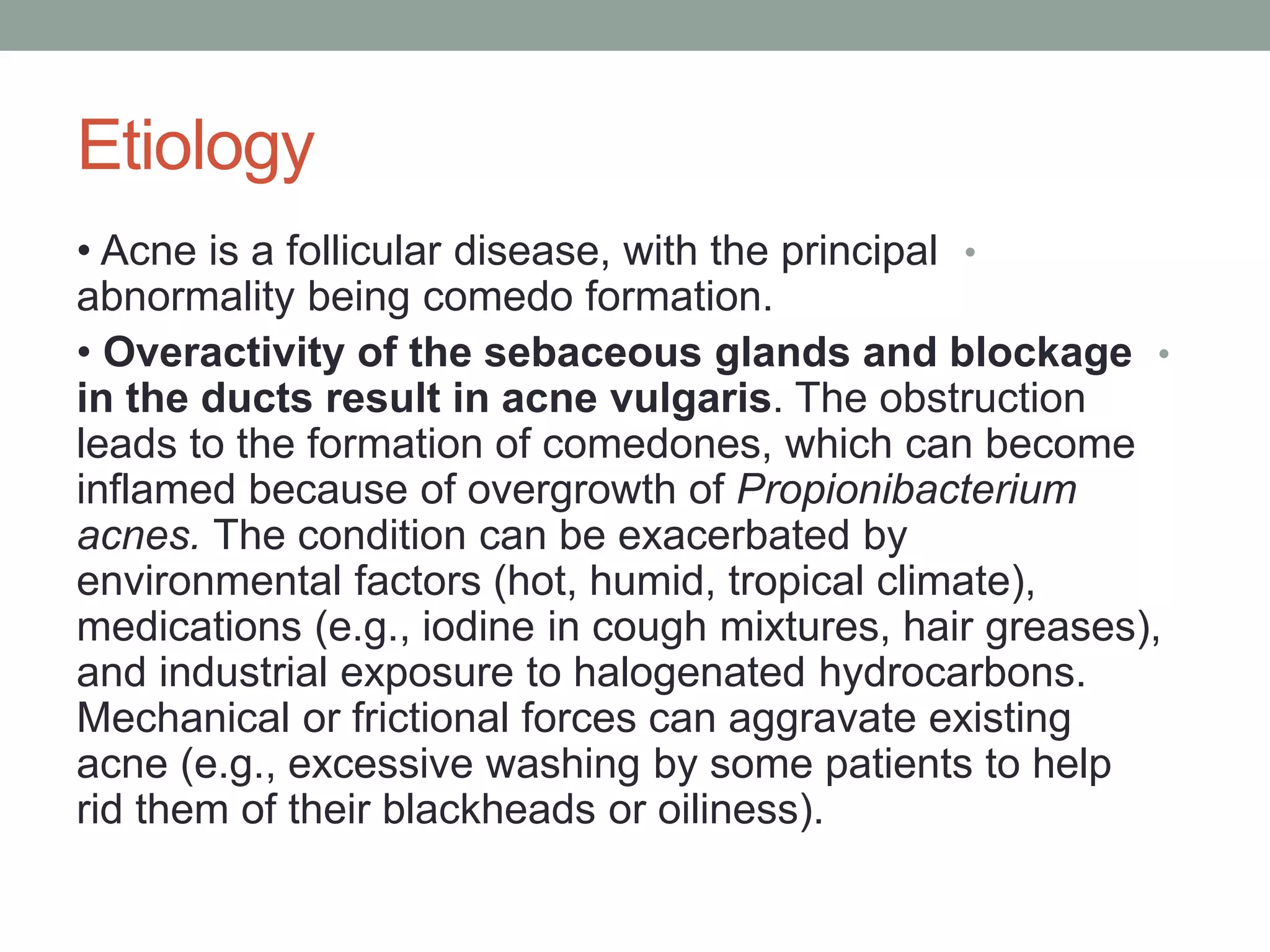1. Acne vulgaris is a chronic skin condition caused by abnormal desquamation of follicular epithelium leading to obstruction of pilosebaceous canals and inflammation.
2. Factors such as overactive sebaceous glands, bacteria, hormones, and environment can exacerbate acne.
3. Treatment involves topical and oral medications tailored to the type and severity of lesions, ranging from topical retinoids and antibiotics for mild noninflammatory acne to oral isotretinoin for severe nodular cystic acne resistant to other therapies.














